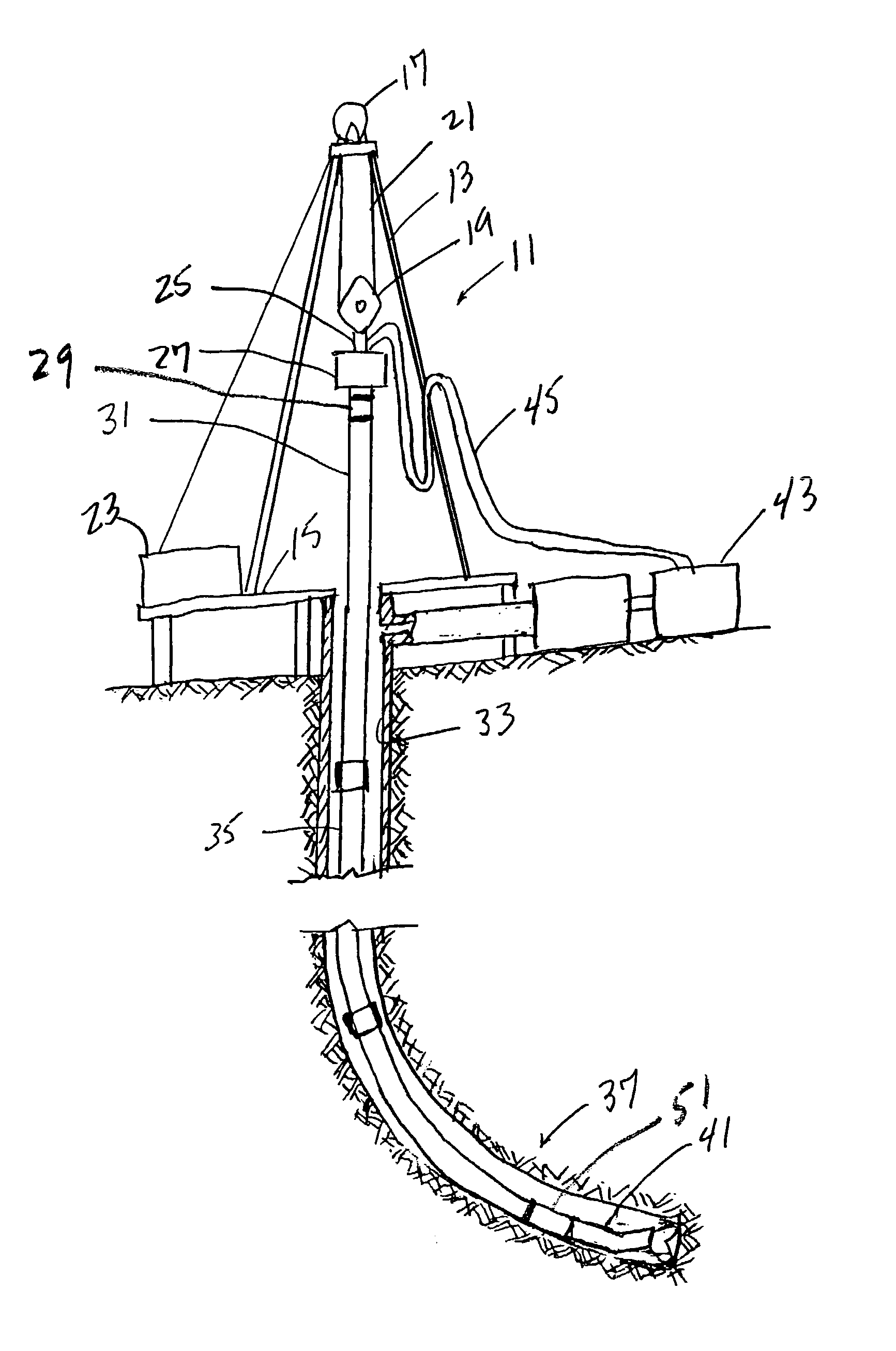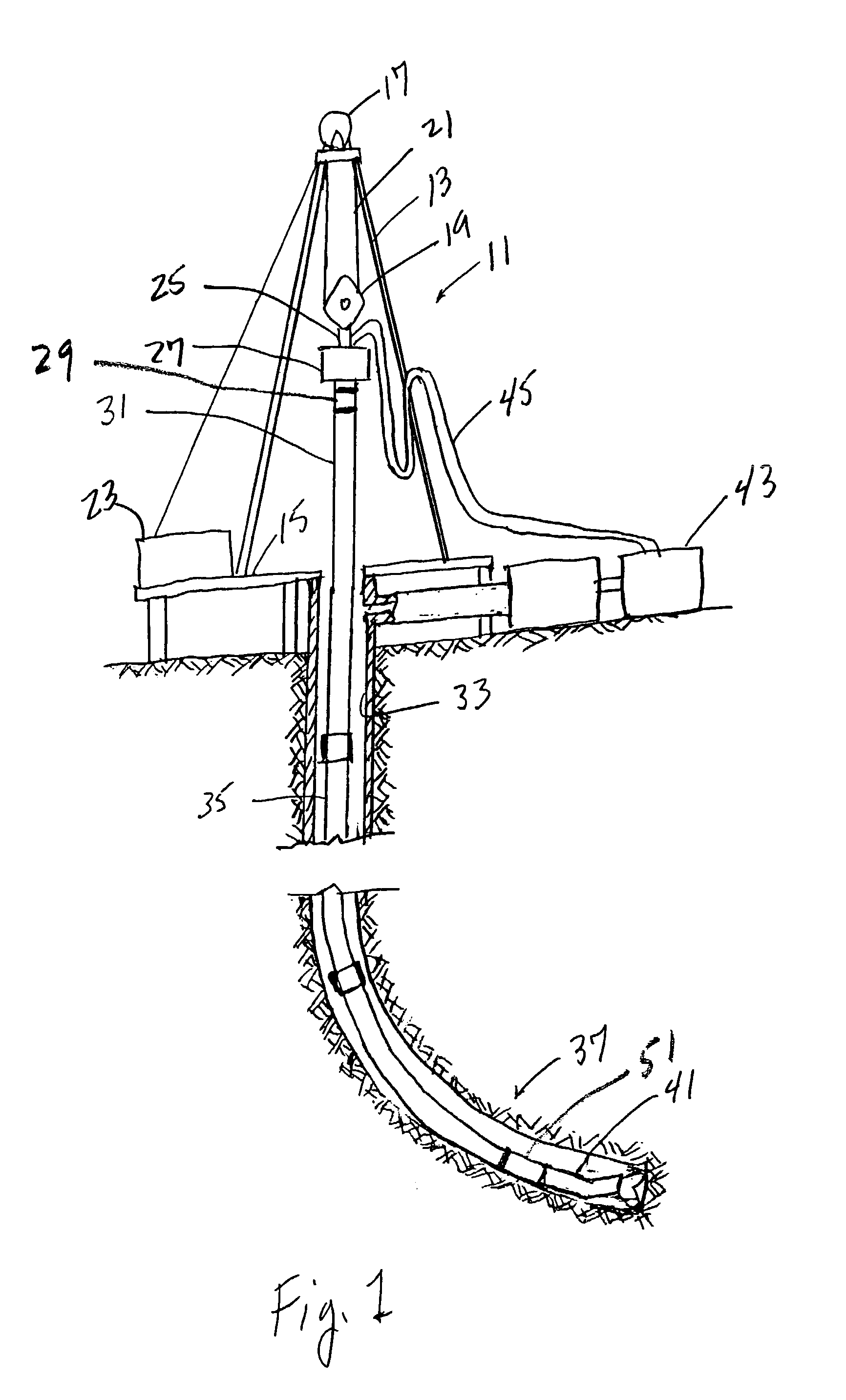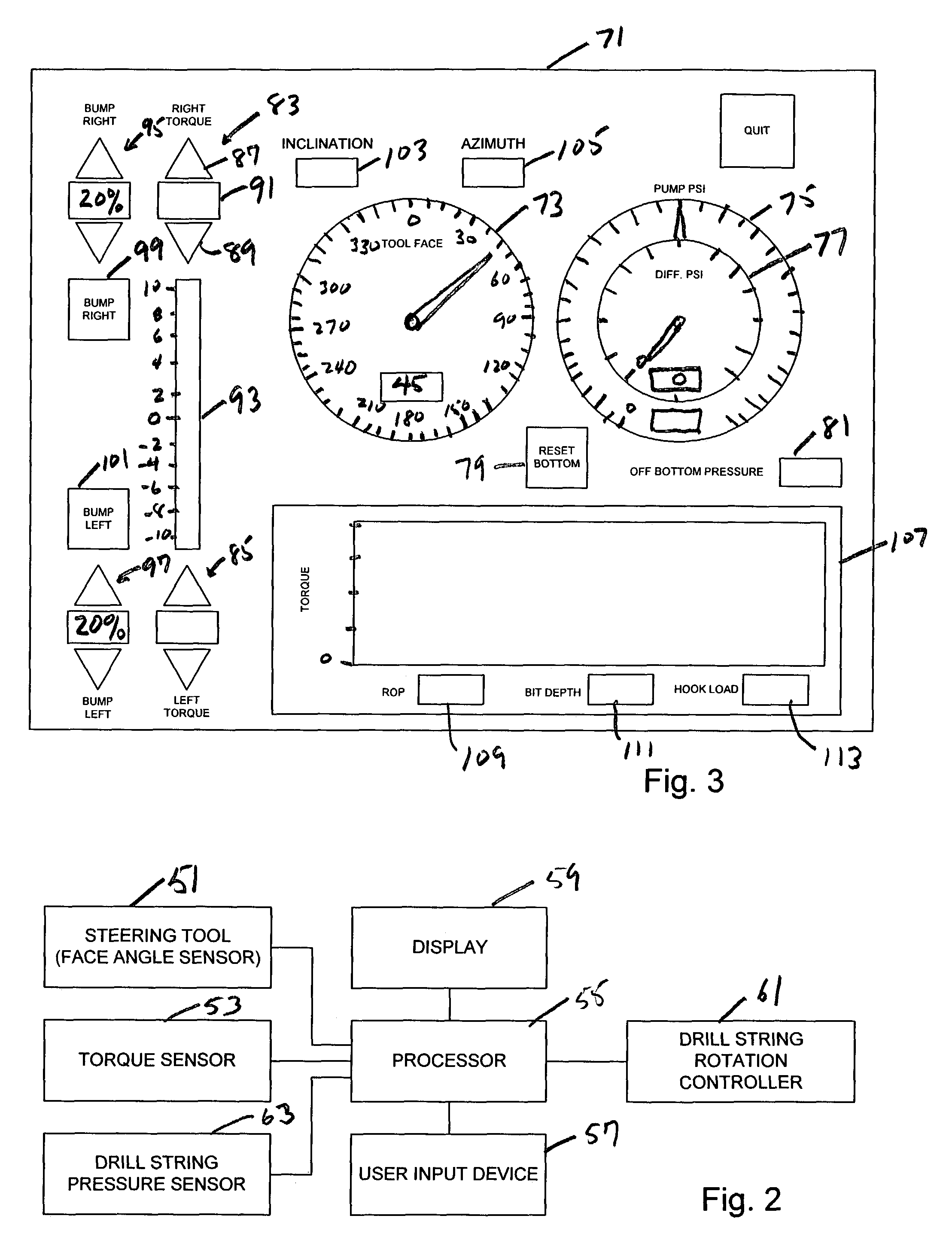Continuous on-bottom directional drilling method and system
a directional drilling and bottom-mounted technology, applied in the direction of directional drilling, borehole/well accessories, survey, etc., can solve the problems of inherently more time-consuming, insufficient time-consuming, and high cost of drilling a well
- Summary
- Abstract
- Description
- Claims
- Application Information
AI Technical Summary
Benefits of technology
Problems solved by technology
Method used
Image
Examples
Embodiment Construction
[0022]Referring to FIG. 1, a drilling rig is designated generally by reference numeral 11. The rig 11 in FIG. 1 is depicted as a “land” rig. However, as will be apparent to those skilled in the art, the method and system of the present invention will find equal application to water-borne rigs, such as jack-up rigs, semisubmersible rigs, drill ships, and the like.
[0023]The rig 11 includes a derrick 13 that is supported on the ground above a rig floor 15. The rig 11 includes lifting gear, which includes a crown block 17 mounted to the derrick 13 and a traveling block 19. The crown block 17 and the traveling block 19 are interconnected by a cable 21 that is driven by a drawworks 23 to control the upward and downward movement of the traveling block 19. The traveling block 19 carries a hook 25 from which is suspended a top drive 27. The top drive 27 rotatably supports a drill string, designated generally by the numeral 35, in a well bore 33. The top drive 27 can be operated to rotate dri...
PUM
 Login to View More
Login to View More Abstract
Description
Claims
Application Information
 Login to View More
Login to View More - R&D
- Intellectual Property
- Life Sciences
- Materials
- Tech Scout
- Unparalleled Data Quality
- Higher Quality Content
- 60% Fewer Hallucinations
Browse by: Latest US Patents, China's latest patents, Technical Efficacy Thesaurus, Application Domain, Technology Topic, Popular Technical Reports.
© 2025 PatSnap. All rights reserved.Legal|Privacy policy|Modern Slavery Act Transparency Statement|Sitemap|About US| Contact US: help@patsnap.com



